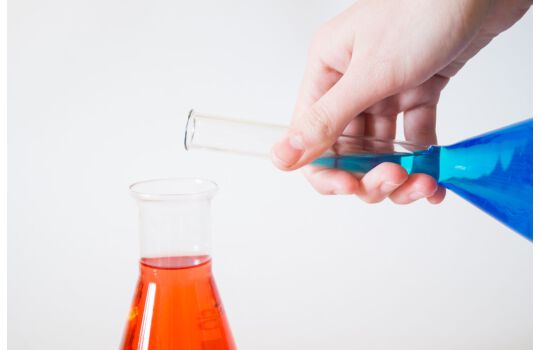Oleic acid is a fatty acid that occurs naturally in various animal and vegetable fats and oils. It is an odorless, colorless oil, although commercial samples may be yellowish. In chemical terms, oleic acid is classified as a monounsaturated omega-9 fatty acid, abbreviated with a lipid number of 18:1 cis-9. It has the formula CH3(CH2)7CH=CH(CH2)7COOH.[2] The name derives from the Latin word oleum, which means oil.[3] It is the most common fatty acid in nature.[4]
Contents
1 Occurrence
1.1 As an insect pheromone
2 Production and chemical behavior
3 Related compounds
4 Uses
4.1 Niche uses
5 Health effects
6 See also
7 References
8 External links
Occurrence
Fatty acids (or their salts) do not often occur as such in biological systems. Instead fatty acids like oleic acid occur as their esters, commonly triglycerides, which are the greasy materials in many natural oils. Fatty acids can be obtained by the saponification of triglycerides.
Triglycerides of oleic acid comprise the majority of olive oil. Free oleic acid renders olive oil inedible.[5] It also makes up 59-75% of pecan oil,[6] 61% of canola oil,[7] 36-67% of peanut oil,[8] 60% of macadamia oil, 20-80% of sunflower oil,[9] 15-20% of grape seed oil, sea buckthorn oil, and sesame oil,[2] and 14% of poppyseed oil. High oleic variants of plant sources like sunflower (~80%) and canola oil (70%) has also been developed.[9] It also comprises 22.18% of the fats from the fruit of the durian species Durio graveolens.[10] Likewise Karuka contains 52.39% oleic acid.[11] It is abundantly present in many animal fats, constituting 37 to 56% of chicken and turkey fat[12] and 44 to 47% of lard.
Oleic acid is the most abundant fatty acid in human adipose tissue,[13] and second in abundance in human tissues overall only to palmitic acid.[14]
As an insect pheromone
Oleic acid is emitted by the decaying corpses of a number of insects, including bees and Pogonomyrmex ants, and triggers the instincts of living workers to remove the dead bodies from the hive. If a live bee[15] or ant[16][17] is dabbed with oleic acid, it is dragged off for disposal as if it were dead. The oleic acid smell also may indicate danger to living insects, prompting them to avoid others who have succumbed to disease or places where predators lurk.[18]
Production and chemical behavior
The biosynthesis of oleic acid involves the action of the enzyme stearoyl-CoA 9-desaturase acting on stearoyl-CoA. In effect, stearic acid is dehydrogenated to give the monounsaturated derivative oleic acid.
Oleic acid undergoes the reactions of carboxylic acids and alkenes. It is soluble in aqueous base to give soaps called oleates. Iodine adds across the double bond. Hydrogenation of the double bond yields the saturated derivative stearic acid. Oxidation at the double bond occurs slowly in air, and is known as rancidification in foodstuffs or drying in coatings. Reduction of the carboxylic acid group yields oleyl alcohol. Ozonolysis of oleic acid is an important route to azelaic acid. The coproduct is nonanoic acid:[19]
H17C8CH=CHC7H14CO2H + 4"O" → H17C8CO2H + HO2CC7H14CO2H
Esters of azelaic acid find applications in lubrication and plasticizers.


